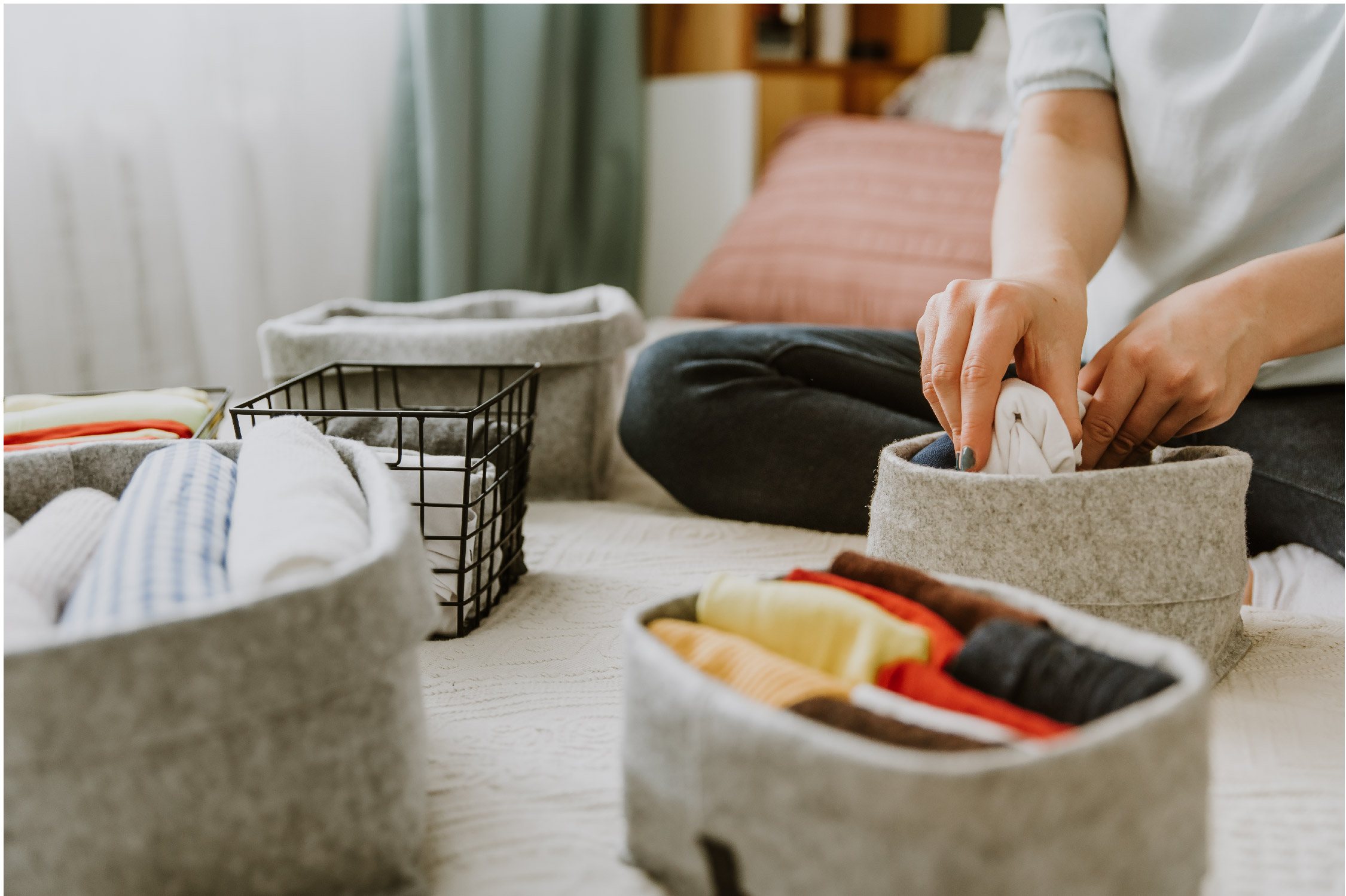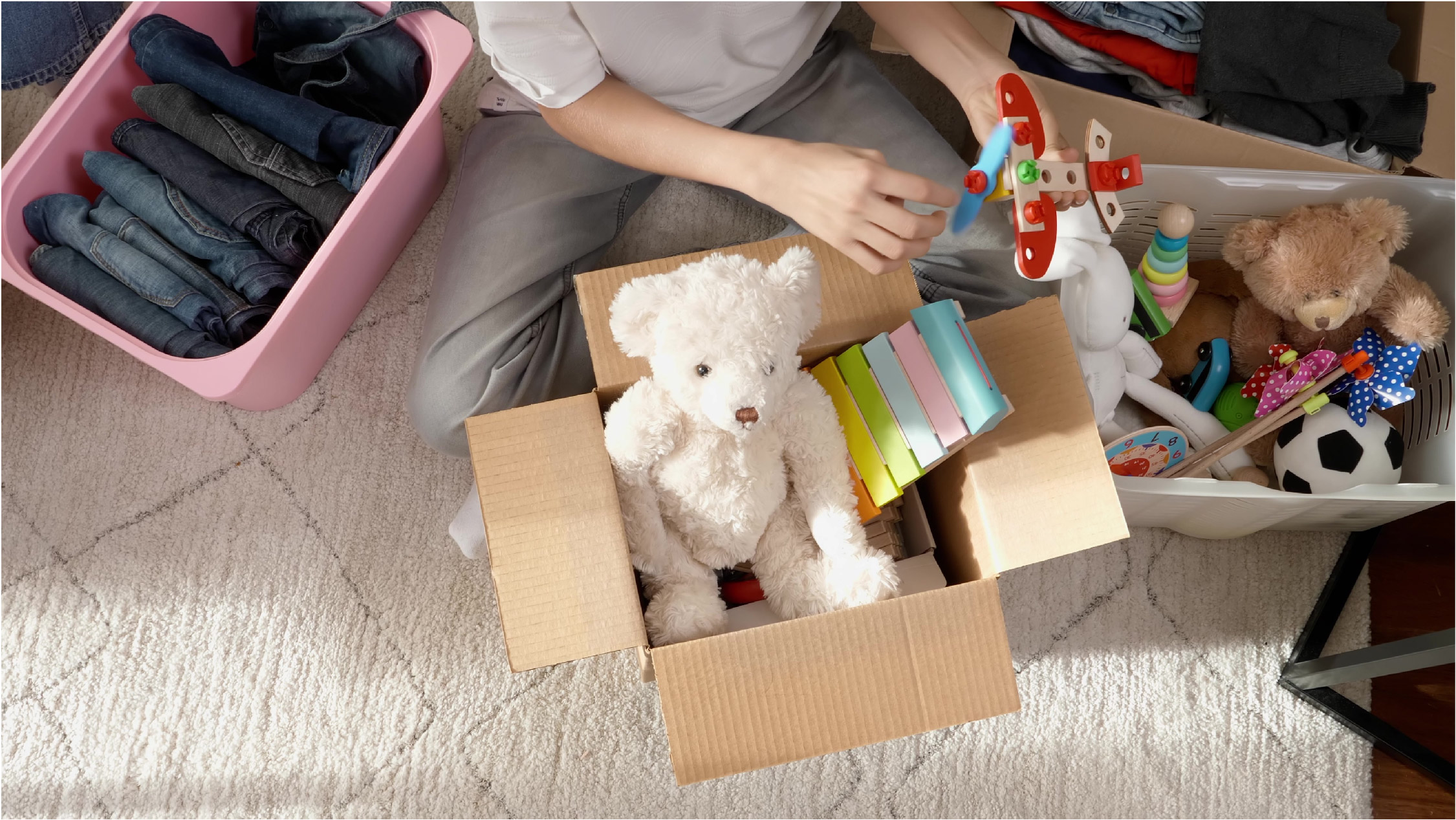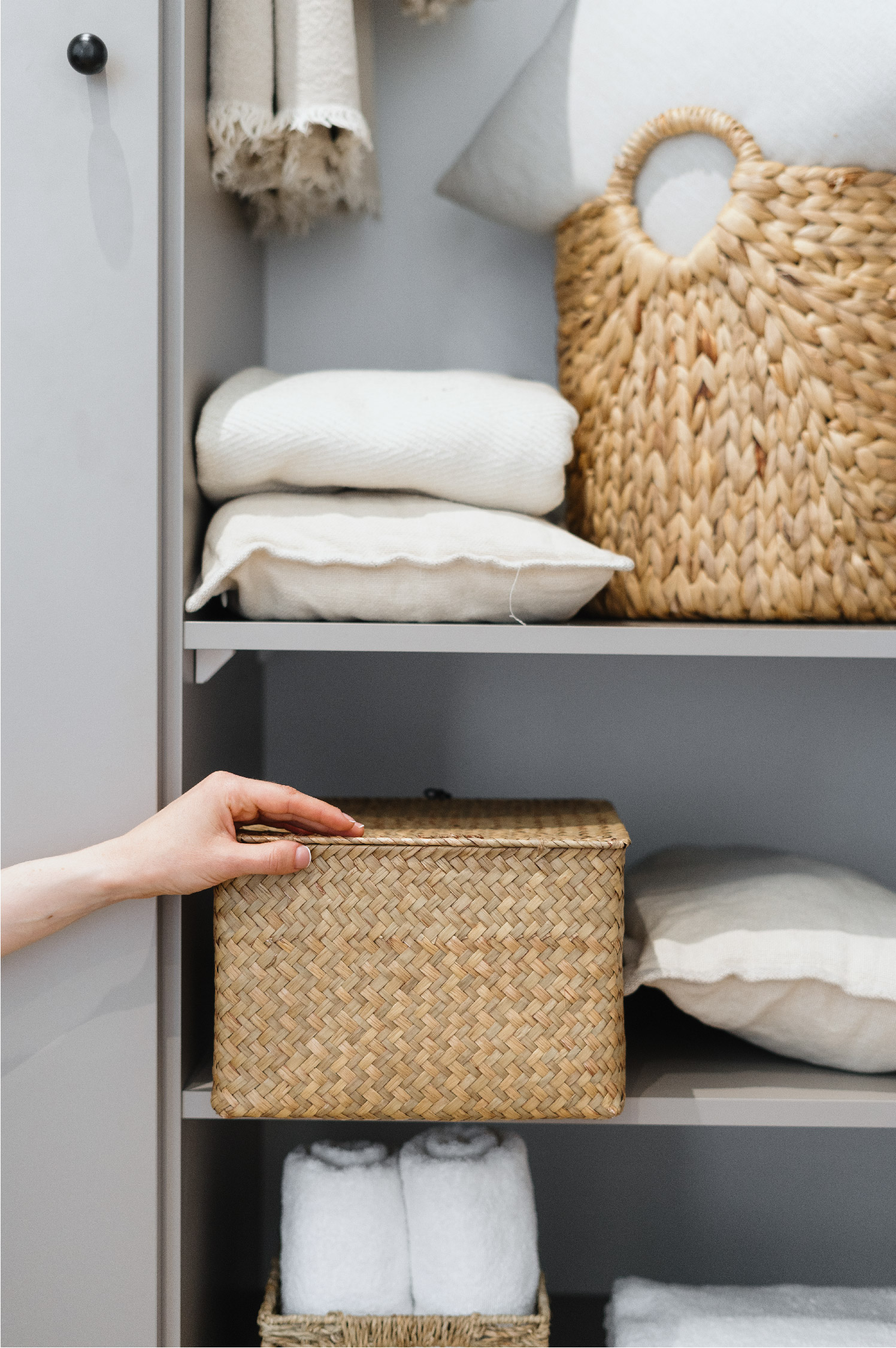8 Tips To Declutter Your Home
With the pandemic came more acquisitions, as those of us working from home found we needed more stuff to work more efficiently. On the flip side, keeping your space free of distractions is key to a calmer, more organised life. Here’s how to do it.
A clean and organised home not only looks good; being in it can help you feel less anxious and stressed, and may even boost your productivity and creativity. Plus, it’s easier to clean, saves you from having to frantically search for items, and gives you the feeling of being more in control over your space and possessions.
Decluttering is the first step to getting your home neat, clean and in order. The task can feel daunting, particularly if you have a lot to sort and clear out. We asked three professional home organisers for tips to make it easier and more manageable.
(1) Enlist a support buddy
“Finding someone who’ll go through the process with you makes the task more enjoyable,” says Rae Zhang, Certified Organisational Specialist and Co-founder of Orderly.
“Put on some music, chat to each other while working, and look through old mementos together. Decluttering together is also a good chance to bond.”
(2) Be focused
Start with a space or a room, says Vanessa Yip, Certified Organisational Specialist and Co-founder of Orderly. This will help you stay focused. Choose a room that you spend the most time in, but if you can’t decide which one to start with, she recommends going for your bedroom, since that should be the most comfortable and restful space in the house. Once you’ve decluttered one room, you’ll be more motivated to do the others.




"Put on some music, chat to each other while working, and look through old mementos together. Decluttering together is also a good chance to bond."
(3)Tidy up by category or sub-category
“I declutter and organise homes using Marie Kondo’s KonMari method,” says Martini Constance, Certified KonMari home organising consultant and Founder of Minimize with Joy.
“Tidying up by category is a good starting point, especially if you don’t know how or where to start. Start with clothes, followed by books, papers, komono (miscellaneous items), and lastly, sentimental items. Taking a photo before you begin and right after you declutter will give you a sense of achievement and encourage you to keep going.”
You can also break these categories up into smaller sub-categories. So, within the clothes category, for instance, you may have outdoor wear, sportswear, pyjamas, shorts, pants, shirts, and so on. After you’ve completed one sub-category, you can move on to the next.
(4) Set realistic decluttering goals
Decluttering can be mentally and physically overwhelming, which is why it’s important to set realistic goals, says Rae. Even if you only managed to work on one drawer all day, think of it as a job well done.
(5) Ask yourself these questions
When deciding what to get rid of, Vanessa says to consider these questions: “Have I used it within the last 12 months?”; “Do I still like it?”; and “Would I buy it again?”.
“If the answer to all three questions is No, the item is unlikely to serve its purpose at this point in your life. Donate it to charity or give it to someone who needs it more. But if you answered Yes to at least one question, keep the item and look at it again in a year.”




(6) Try to “let go”
It can be hard parting with items, especially sentimental ones. Martini suggests saying “Thanks” to it before you let it go.
“The item has served its purpose for you, and if it’s still in good condition, donate it or give it away. You’ll feel better knowing that it will continue to serve its purpose for others.
“Most of the time, we find it hard to let go of things because of an attachment to the past and/or a fear of the future – for example, keeping things ‘just in case’. You need to constantly remind yourself that you live in the present.”
(7)Donate or sell what you no longer want or need
List unwanted items on platforms like Olio and Carousell. Rae says that these apps are free to use and buyers can pick up the items from your home or a location of your choice.
Alternatively, look for Facebook groups with active users who are keen to buy pre-loved items (Tip: type keywords like “SG give away” or “Free your stuff Singapore” to find such groups).
“You can also donate items that are still in good condition,” Rae adds.
“Some organisations collect used spectacles and even bras. Simply do a quick online search and take note of the types of items these organisations accept.”
If space allows, you can even consolidate items you want to give away and invite your friends and family to “shop” or take what they need from the pile.
(8)Prevent your space from getting cluttered again
Give every item a “home”, Martini suggests. This way, you’ll know where to look when you need it and where to put it when you’re done using it.
“However, as simple as this sounds, some people find it hard returning things to their dedicated storage space. If this sounds like you, get into the habit of returning items to their respective homes and remind yourself that it’s easy to keep your home clutter-free.”
Rae adds that investing in bins, baskets, stackable drawers and other storage solutions can also keep your space tidy and organised.








